Any Category
Electronics Manufacturing Machines
Industrial automation technology
Power engineering equipment & electrical supplies
Other woodworking machinery
Process engineering
Material handling
Construction machinery
Metal processing machinery
Woodworking machinery
Paper-, cardboard-, foils processing machinery
Glass & ceramics processing machinery
Plastic processing machinery
Packaging machinery
Printing machinery
Filling technology
Stone working machines
Agricultural machinery
Special purpose machines
Cable and Wire Manufacturing Machines
Food processing machinery
Textile processing & fabrication
Overstock/ excess stock
Propulsion & conveying technology
Power tools
Motors
Office equipment
Other machinery for chemical & pharmaceutical industry
Municipal equipment
Wastewater treatment technology
Refrigeration & cooling technology
Cleaning machines & facility management equipment
Medical technology
Surface finishing machines
Air compressors & pneumatic equipment
Vacuum technology
Measuring & testing equipment
Telecommunication technology & industrial computers
Commercial vehicles
Mail processing equipment
Waste management & recycling machinery
Car workshop equipment
Forklifts & industrial trucks
Manipulators
Robots
Switchgears and switchboards
Assembly systems & assembling machines
Positioning systems
Mounting technology
Control Units
Sorting machines
Inne maszyny
Block heat and power plant
Hydroelectric power plant / hydropower systems
Photovoltaic systems & solar panel technology
Generators
Components & accessories
Steam boilers
Refrigeration systems & cooling machines
Heating & blowers
Switchgears & controls
Diesel generators
Compressed-air
Gas handling equipment / gas tools
Transformers
Steam turbines
USV
Heat exchanger
Emergency power generators
Other power engineering equipment
Automation technology
Decanter
Blowers
Storage containers
Mixing machines
Mills
Wastewater pumps / sewage pumps
Chamber filter-press
Presses for woodworking
Water treatment equipment
Compressors
Drying
Membrane filtration systems
Filter systems / filtration units
Centrifuges
Ion exchangers
Vacuum evaporator
Other process engineering equipment
Hall construction
Paternoster / Storagelift
Cranes
Containers
Pallet cages
Glass storing systems
Order pickers / order picking equipment
Palettes storage
High-bay warehouses
Scissor lifting tables
Pallet racks & open storage shelves
Palettes drive-in shelves
Pallets
Storage platforms
Elevating tables
Heavy-duty shelves
Cantilever racks
Stacking frames
Flow rack
Cable drum shelving
Bolted shelves
Modular shelves / modular shelving units
Wide shelving units / wide span storage racks
Silos
Stacking boxes
Mobile Shelving
Pallet flow racks
Industrial carts & trolleys
Safety cabinets / HAZMAT lockers
Lighting technology
Storage tanks
Inne maszyny
Spare parts
Cranes
Generators
Other construction machinery
Containers
Excavators
Road pavers
Wall plastering machines
Building material fabrication
Grinding machines & cutting machinery
Track laying machinery
Punch presses & bending machines
Construction tools
Attachments
Work platforms
Pumps
Prasy
Industrial trailers / construction site trailers
Skrobak
Graders / road graders / grader blades
Construction equipments
Sewer construction tools & pipe construction equipment
Tunnelling-equipment
Crushing equipment
Sprężarki
Dozers
Soil stabilizers
Drill systems
Asphalt technology
Concrete formwork / shuttering equipment
Concrete technology & mortar preparation
Pile drivers / pile hammers
Rammers / tamping rammers
Road rollers
Demolition tools, recycling machines & landfill equipment
Cutters
Dump trucks
Compactors
Production plants
Construction material testing equipment
Loader
Trench cutter
Wheel dozers
Akcesoria
Feeder
Double end tenoner
Mortisers
Frezarki
Inne maszyny
Kompletne warsztaty / pakiety maszyn
Parquet production lines
Finger jointing lines
Carpentry machines
Postforming machines
Lacquering machines & equipment
CNC-Processing machines
Sharpening machines
Optimization Cross Cut lines
Coating machines
Glue coating machines
Door manufacturing machinery
Veneer fabrication
Maszyny do produkcji okien
Pallet production
Structuring machines
Brushing machines
Drilling Machining Centers
Joinery machines
Woodturning machines, Lathes
Conveyors / conveying systems
Combined machines
Edgebanding machines
Software
Piły
Prasy
Particleboard / chipboard production machines
Wood shredder
Sprężarki
Bench stops & auxiliary woodworking tools
Planers
Finishing machines
Suszarki
Heating
Wood Sanders
Destacking device
Sawmills
Dust Extraction
Cutting machines
Nail guns & staplers
Wood splitters
Accessories
Vertical machining centers
Machining centers (horizontal)
Universal machining centers
Wood milling machines
Gear cutting machines
Inne maszyny
Instruction manuals
Complete workshops / machine packages
Deburring machines
Engraving machines
Planing machines
Threading machines
Window machines
Welding machines & cutting equipment
Flow forming machines
Honing machines
Electrical discharge machines (EDMs)
Lapping machines
Foundry machinery
Polishing machines
Measuring machines
Forging attachments
Facing & centering machines
Transfer machines
Sheet metal working
Diecasting
Furnaces
Piły
Prasy
Sprężarki
Broaching & slotting & drawing machines
Szlifierki
Lathes
Surface finishing machines
Drilling machines & boring mills
Slotter & Casemaker
Inne maszyny
Laminating installations
Folding machines
Labelling machines for textiles
Paper cup production machinery
Paper box production machinery
Paper tube production machinery
Paper towel machines
Toilet paper production machinery
Bag machines
Paper ruling machines
Perforating machines / perforators
Envelope machines
Cutting machinery
Die cutting presses
Prasy
Corrugated cardboard manufacturing & processing
Cardboard production
Punches
Folder gluers
Roller conveyors / roll conveyor belts
Carton erectors
Case sealers / carton sealing machines
Notebook production
Winders / winding machines
Inne maszyny
Glass recycling machinery
Brick and tile moulding machines
Insulating glass making machines
Glass burners
Prasy
Clay handling
Glass cutting desks
Glass grinding machines
Glass drilling machines
Agglomerators
Spare parts, tools, devices
Moulds for plastic processing / injection moulds
Calender rolls / rolling mills
Inne maszyny
Granulating plants
Complete production lines
Thermoforming machinery
Injection moulding machinery
Deep drawing machines / thermoforming machines
Quality assurance equipment
Foil processing machinery
Rubber processing machinery
Maszyny do produkcji okien
Polyurethane processing machinery
Maszyny do przetwarzania, obróbki oraz urządzenia pomocnicze
Printing machinery
Blow moulding machinery
Welding machinery
Mixer
Młynki
Handling equipment & robots
Prasy
Reprocessing & recycling equipment
Finishing, decorating, printing & marking equipment
Suszarki
Heating & cooling units
Peripheral devices
Belt pullers / capstans
Extruder & extrusion lines
Zwijarki
Inne maszyny
Shrinking Equipment
Flat film lines
Banderoling machines
Blister packaging machines
Bag forming, filling and sealing machines
Maszyny do głębokiego tłoczenia
Paper wrapping machines
Vacuum shrink-wrap machines
Bag sealing machines
Strapping machines
Weighing & filling machines
Finishing machines
Sealing machines
Packing machines
Palletising
Cardboard packaging
Packaging material production machines
Labeling equipment
Filling technology
Tray and case erectors
3D Printers
Inne maszyny
Complete print shops
Screen printing machine
Digital Print
Cardboard printing machines
Post press machines
Book binding machines
Reprography machines / reprographic equipment
Pad printing machines
Maszyny drukarskie
Pre-press
Rotary printing press
Flexographic printing press
Offset printing press
Gravure printing press
Letterpress
Letterpress printing machines
Stationary Presses
Web offset printing press
Systemy do etykietowania
Inserter
Stackers
Przetwarzanie i recykling
Rafinowanie, dekorowanie, drukowanie, stemplowanie
Suszarki
Urządzenia grzejne i chłodzące
Urządzenia peryferyjne
Urządzenia wyciągające
Wytłaczarki i linie do wytłaczania
Zwijarki
Inne maszyny
Bagging plants
Drum filling machines
Tube filling machines
Bin filling
Storage systems
Water filling machines
Palletizers
Conveyor systems / conveyors
Vertical filling machines
Pallet filling
Machining Centers
Stone milling machines
Inne maszyny
Cone chrushers / stone crushers
Drilling machines
Mills
Sandblasters
Saws
Vacuum lifters
Sanders
Rock splitters
Tractors
Agricultural spare parts
Inne maszyny
Stable equipment, milking systems and milk coolers
Oldtimer
Harvesters / reapers
Combine harvesters
Rotary mowers / rotary cutters
Forestry machines / logging equipment
Handling equipment / loaders
Tires, wheels, rims
Sprayer
Pesticide sprayers & fertilizer spreaders
Front-end loader
Feeding machines / feeders
Balers & baling equipment
Manure spreaders & slurry spreaders
Forage harvester
Choppers / shredders
Seed drills / seed planters / planting machines
Irrigation equipment
Intercultivation & maintenance equipment
Agricultural conveying and storage technology
Grain storage techniques
Hay technology
Vegetable technology
Fruit-, viniculture technology
Beet technology
Potato technology
Yard technology
Grassland technology
Transportation equipment & trailers
Tillage equipment / field cultivators
Cutting units
Bull blocks
Inne maszyny
Wire weaving
Packaging machines
Wire drawing machines
Wire cutters
Chamfering machines
Wire crimping machines
Spring coiling machines / spring winders
Chain link fence machines
Bent component manufacturing
Cable manufacturing machines
Spring making machinery
Chain production machines
Screw manufacturing machines
Wire straightening machines
Butt welding machines
Spring end grinding machines
Fettling machines
Electrical discharge machines / wire erosion machines
Wire feeders
Prasy
Wire pin presses
Decoiler
Mesh welders
Pointing machines
Winders / rewinders for wire
Electroplating Machines
Refrigeration Systems
Dekanter
Vending machines
Grain processing machines
Filters for food processing
Inne maszyny
Sifting plants
Cooking vessels
Stirring machines & bakery mixers
Maszyny do pakowania
Fat production & handling
Ice-cream machines
Pasta processing machinery
Beverage production
Delicatessen machinery
Blending machines
Gastronomy equipment
Milk & dairy production
Młynki
Pompy
Potato chips production
Powder production & powder processing machines
Popcorn machines
Confectionery production
Storage & handling equipment
Coffee, tea, tobacco processing
Meat processing
Fruit-, & vegetable processing
Fish processing
Separators
Laboratory equipment for food
Brewing-, malting equipment
Suszarki
Cleaning technology / cleaning machines
Mixing machinery
Oil production
Dairy plant equipment
Scales for chemicals and pharmaceutics
Food smoking equipment
Kitchen equipment
Bakery-, pastry equipment
Latch plate automat
Embroiderers
Inne maszyny
Warp knitting machines
Laminating machines
Textile cleaners / fabric cleaners
Punching machines / punch presses
Maszyny do etykietowania
Winding machines
Textile Packaging Machinery
Textile care machines
Quilting machines
Ironing machines
Sewing-machines
Nonwoven machines
Maszyny drukarskie
Knitting machines
Weaving machines
Warping machines
Prasy
Spinning machines
Stenters
Dyeing equipment
Wycinarki
Pleating machines
Winders
Inne maszyny
Magnets for lifting & magnetic machinery
Maszyny transportowe
Bulk feeders / bulk conveying equipment
Lift trucks
Pompy
Roller conveyors
Electric motors
Scissor lifts / scissor lifting tables
Conveyor belts
Chain hoists & lifting equipment
Vibrators
Overhead Cranes
Handheld cutting tools
Frezowanie
Inne maszyny
Soldering, glueing and welding tools
Agitators / stirring tools
Piły
Sprężone powietrze
Sanding
Drilling, screwing and chiseling tools
Inne maszyny
Transmissions
Petrol engines / gasoline engines
Silniki elektryczne
Gas engines
Silniki wysokoprężne
Printers
Inne maszyny
Copiers
Office furniture
Shredders
Software
Video projectors
Safes
Telecommunication equipment
Wyświetlarki
Filtration systems
Inne maszyny
Stirring & Mixing equipment
Laboratory equipment
Silos and chemical tanks
Drying systems
Boilers
Kontenery
Filling machines & closing machinery
Capsule machinery
Maszyny pakujące
Mixer
Młynki
Sewage systems / wastewater treatment plants
Piece
Pompy
Prasy
Conveyor systems for chemicals and pharmaceutics
Reactors, boilers, containers
Sieczkarnie
Dosing systems & chemical batchers
Extraction systems / industrial extractors
Wagi
Wirówki
Heat exchangers
Compact tractors / small tractors
Rotary cultivators
Inne maszyny
Garbage disposal & recycling equipment
Golf course maintenance equipment
Winter service / snow removal equipment
Public utility vehicles
Road sweepers
Wood shredder / woodchippers
Mowing machinery
Akcesoria
Inne maszyny
Gas flare systems
Sludge dewatering equipment
Pompy
Anaerobic reactors for water treatment
Cold storage units
Chillers
Inne maszyny
Air conditioners
Refrigerators
Maszyny do produkcji lodów
Refrigerant compressors
Compound units
Tunele do obróbki na zimno
Evaporators
Refrigerant compressor sets
Inne maszyny
Maszyny do czyszczenia tekstyliów
Sandblasters / sandblasting machinery
High-pressure cleaners
High-pressure water jets
Vacuum cleaner
Washers
Machines and parts cleaning equipment
Dry ice blasting equipment
Scrubber driers
Sweepers
Ultrasonic cleaning plants
Inne maszyny
Medical lasers
Expendable supplies
Pompy
Diagnostic equipment
Dentistry
Imaging systems
Ventilation machines / breathing machines
Ultrasound
Electromedical equipment
Monitoring devices (medical)
Urządzenia sterujące
Eye testing machines
Laboratory equipment
Hospital equipment
Inne maszyny
Surface grinding machines
Etching machinery
Pre-treatment systems
Piece
Układy wydechowe
Sand blasting equipment
Galvanic equipment
Paint finishing systems
Powder equipment
Akcesoria
Coolers / chillers
Filtry
Inne maszyny
Kontenery
Narzędzia
Pompy
Silniki
Sprężarki
Controls
Dryer
Inne maszyny
Vacuum chambers
Pompy
Vacuum thermo systems
Leak testers
Accelerators
Force & pressure measuring devices
Engine test stands
Inne maszyny
Coordinate measuring machines
Test bench
Measuring systems
Material testing
Balancing machines
Inne maszyny
Industrial computers
Oprogramowanie
Servers
Workstations
Telephone systems / business phone systems
Peripheral devices & spare parts
Akcesoria
Buses / autobuses
Dźwigi
Inne maszyny
Kontenery
Koparki
Tractor units for semi-trailers
Rail cars, water vehicles & aircrafts
Silo vehicles / tank trucks
Vehicles for demolition, recycling & landfill
Przyczepy
Trucks over 7.5 metric tons
Tow-Trucks
Vans & Trucks up to 7,5t
Wywrotki
Inne maszyny
Krawędziarki
Mail processing lines
Franking machines / postage meters
Maszyny kopertujące
Autoloaders
Conveyor belts for mail processing
Wagi
Inne maszyny
Instalacje do granulowania
Instalacje do przesiewania
Regeneration plants
Compounding machines
Kontenery
Dewatering machines
Cooling unit recycling machinery
Młynki
Crushing mills
Niszczarki
Shears
Air separators
Prasy
Plastic processing machine
Sieczkarnie
Silosy
Sorting equipment
Suszarki
Taśmy przenośnikowe
Separation technology
Metal stripping equipment
Agglomeration units
Crushing units
Suction units & Filters
Wirówki
Extruder
Inne maszyny
Engine reconditioning machines
Brake service machines
Exhaust extraction systems
Industrial vacuum cleaners
Lifting equipment
Air conditioning service equipment
Tire service equipment
Wyposażenie warsztatów samochodowych
Wheel alignment machines
Electric forklifts
Other type of drives
Nasadki
Pallet Trucks
Gas forklifts (LPG, natural gas)
Diesel forklifts
Search announcements
Search announcements



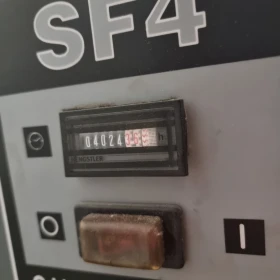
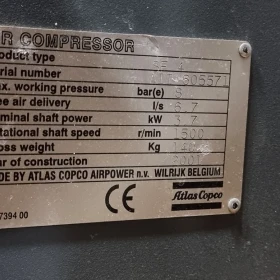
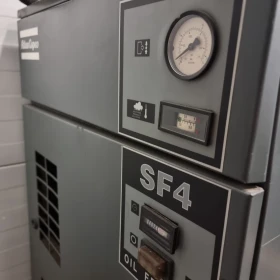
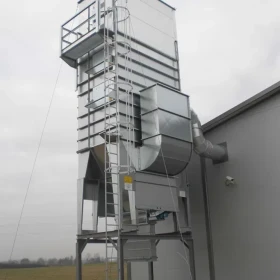
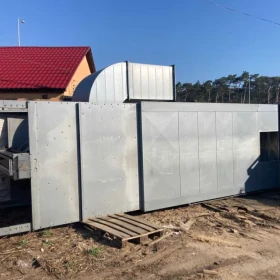
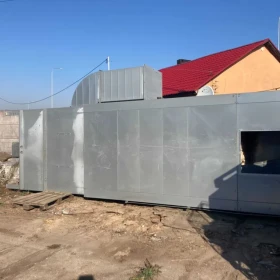
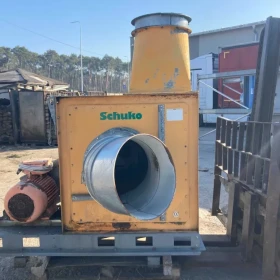
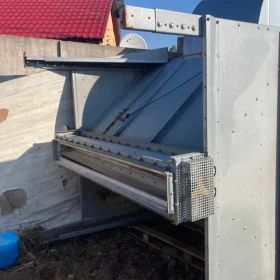
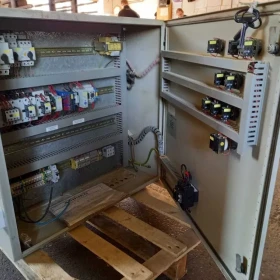
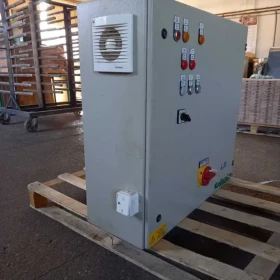
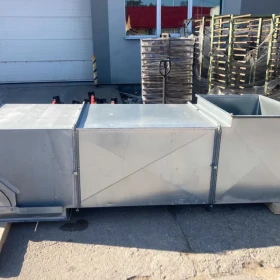



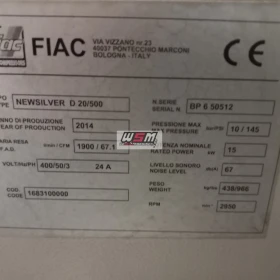


 Log in with Facebook
Log in with Facebook Log in with Google
Log in with Google